Leeks are one of my favourite winter vegetables. Marilyn’s Cheesy Leeks are one of my ultimate comfort foods. Some meals – especially slow-cooked winter stews – just don’t taste right without a side of them.
To get that delightful winter harvest, I’ve been planting leeks this week. It struck me that leeks are a bit of a law unto themselves when it comes to planting. To get leeks with nice fat, long white stalks, there’s a couple of tricks worth knowing.
Seed or seedling?
If you’re planting now, pick up a pack of seedlings. Seeds really needed to be started in October-November. If you start seeds now, they won’t fatten up fast enough and you’ll lose many of them going to flower in spring.
If you happen to have sown seeds in November, you probably already know what you’re doing, plus you’re organised to boot. Well done you! Personally, I’ve just found it easier to purchase the seedlings in January/February, than to keep seeds alive over the busy and hot holiday period!
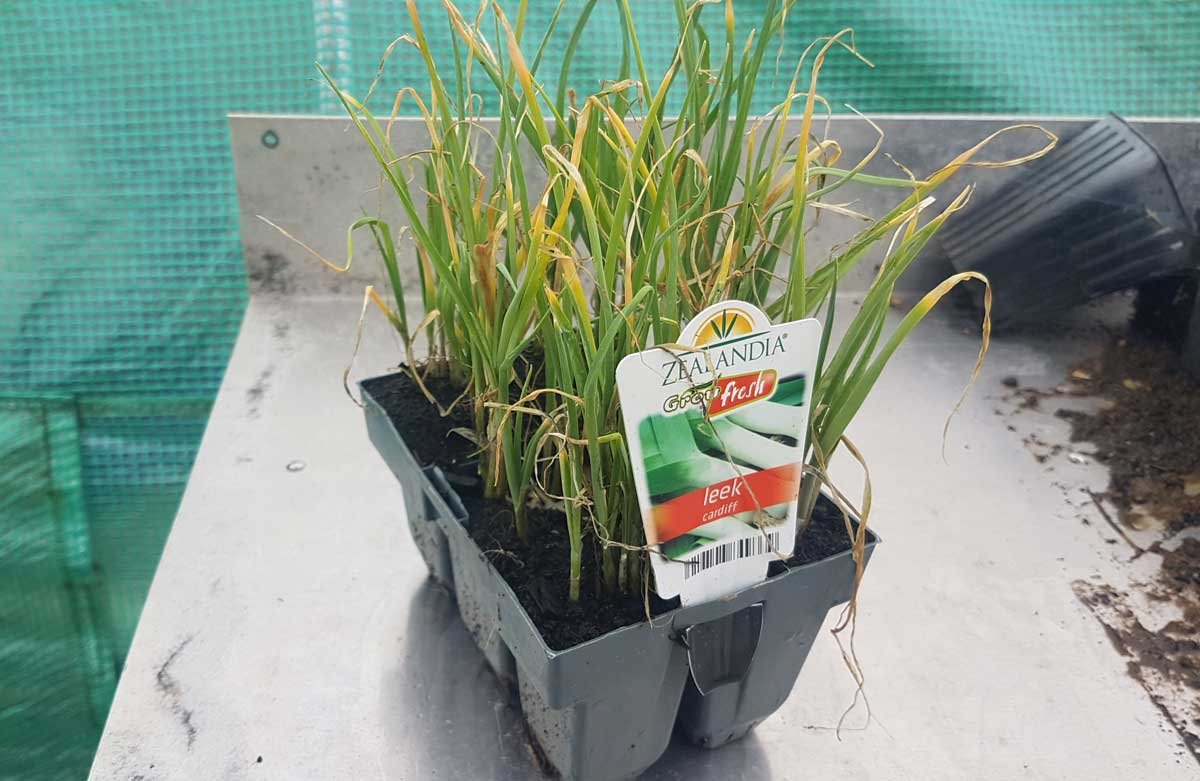
I bought my seedlings quite a few weeks ago. They have been waiting for me to find my dibber before I could plant them. They’re perhaps not as leafy as they could be, but that won’t matter when we put them in the ground.
Get yo’ dibber
A dibber is a critical piece of equipment when planting leeks. It’s basically a pointy stick.
My dibber is a piece of dowel with a pointy plastic thing I bought off AliExpress stuck to one end. This year, I lost my original piece of dowel and had to go buy a new one. One day I’ll make a truly beautiful tool out of this stick. But for now, this’ll do.
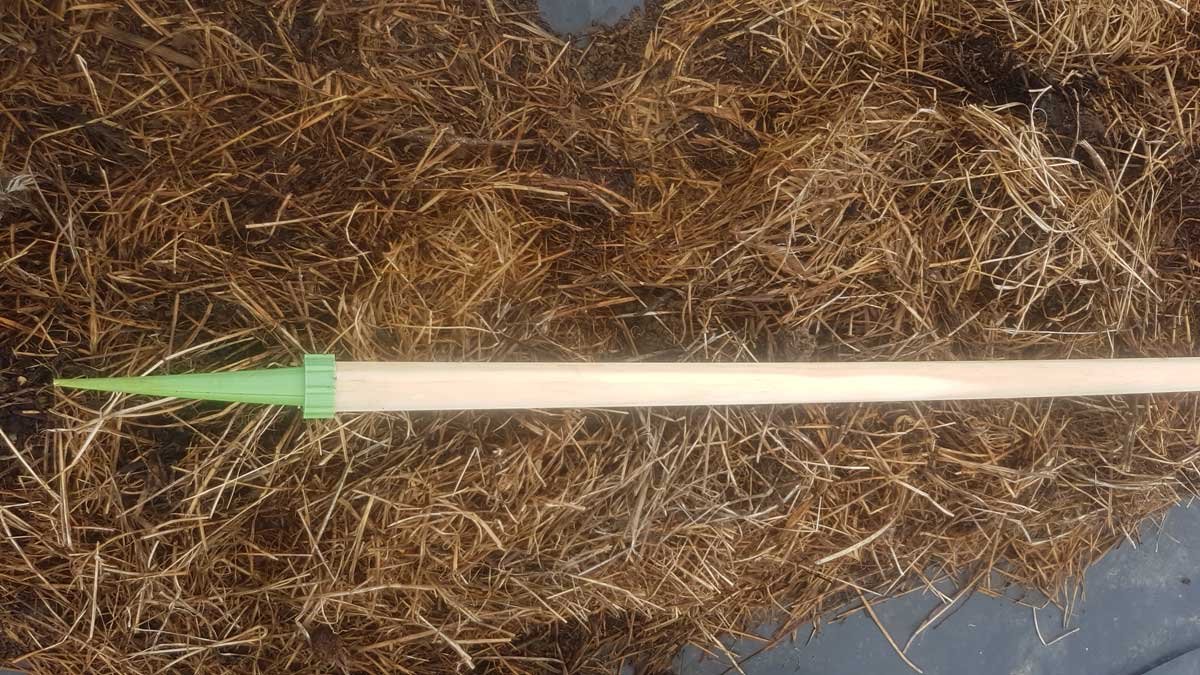
The dibber makes nice uniform holes to drop your leek seedling into. This is how you create the long white shanks on the leek – you blanch them by denying them light, by burying them deep.
If you don’t have a pointy stick, then a stick with a diameter of 2-3cm will do. The handle of most tools is about right. Think about the width of a leek – the width of this hole guides the size of your eventual leek.
Prepping leeks for planting
You have your seedlings, and your dibber. But before the seedlings can go into the ground, they need a haircut.
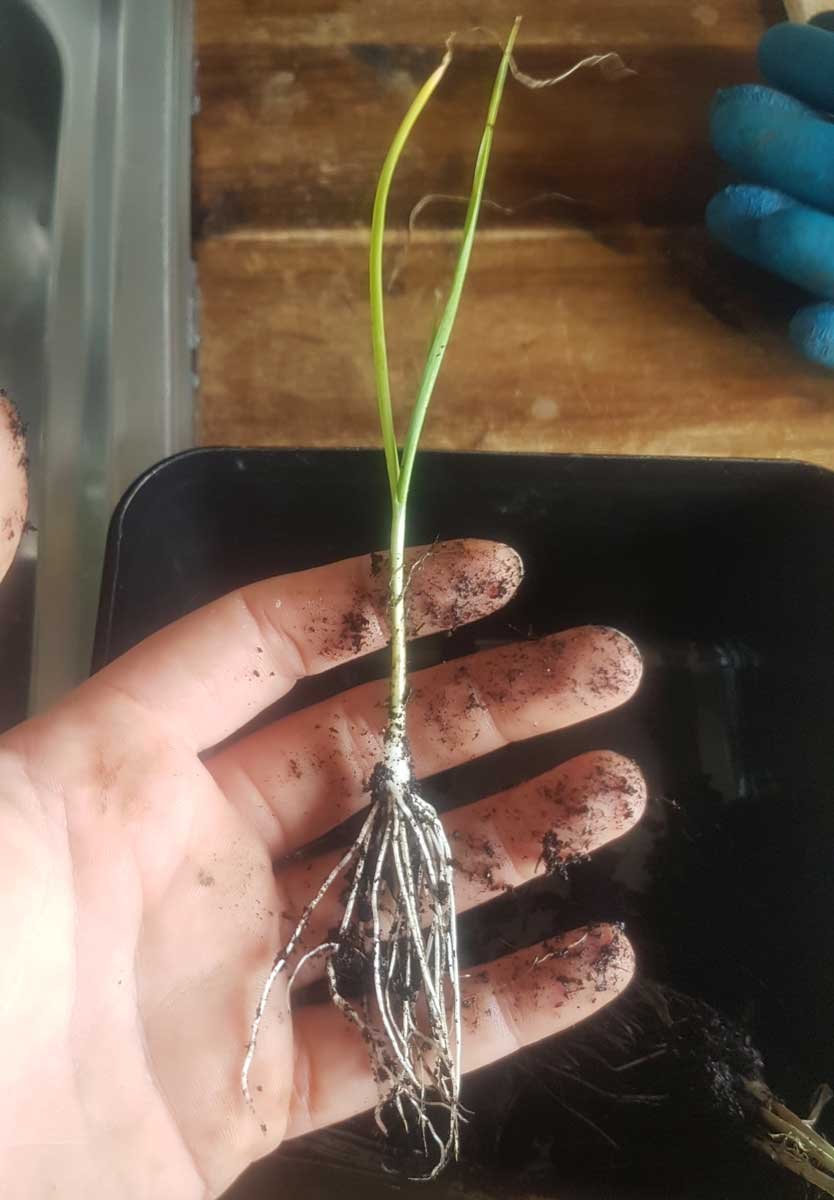
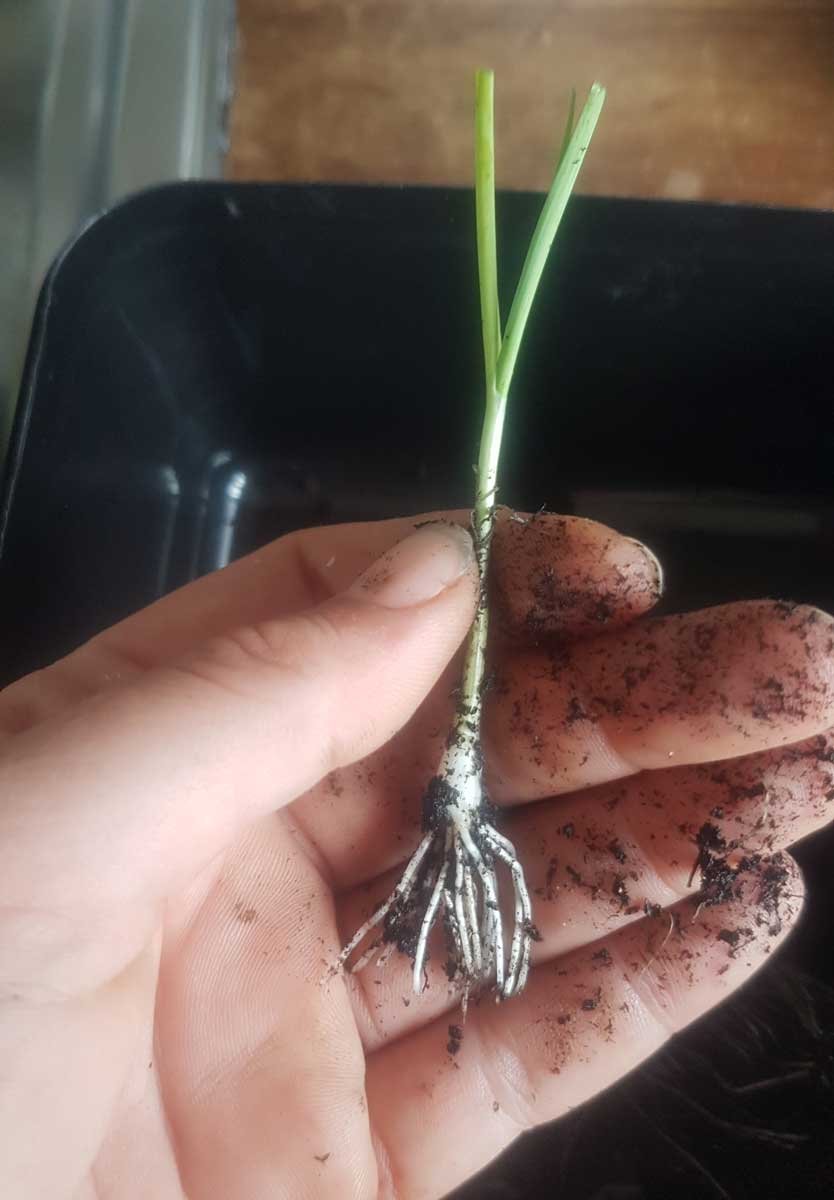
Trim off the roots, leaving about 1.5cm at the bottom of the leek. Trim up the leaves too, leaving 3-4 cm of growth above the point where they split off.
In previous years, I’ve done this one-by-one as they went into the holes. This year, I batch-processed them, trimming all my leeks at once. It made planting way faster.
Planting leeks
Firstly, make a hole with your dibber. You may want to make several at once in rows. Place your holes about 20-30cm apart (leeks can get rather leafy as they mature).
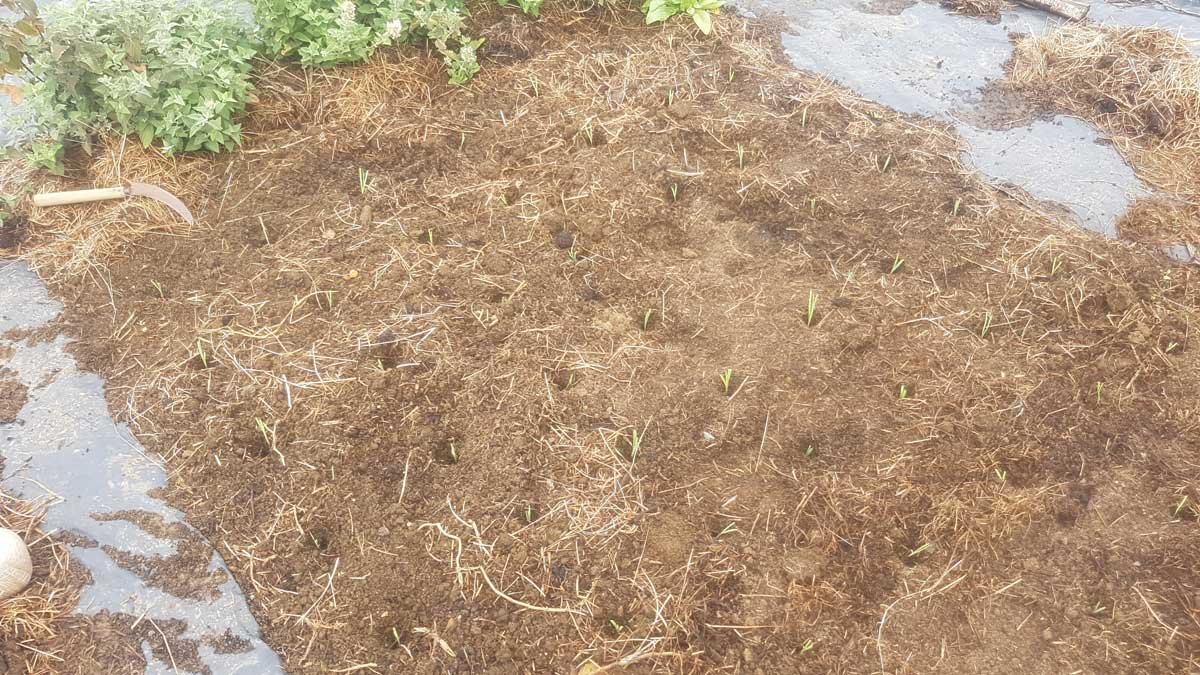
It helps if your ground is moist when you do this so the soil doesn’t just in-fill. Make your holes about 7-10cm deep.
Drop your trimmed leeks into each hole. Don’t back-fill the soil. You only need to put the leek in the hole. Then you’re done.
Over time, the hole will fill itself in, and the leek will grow into the hole.
Long, white shanks
As I mentioned above, you get long white shanks on your leeks by blanching them. You do this by denying that part of the leek any light so that it cannot produce chlorophyll (the chemical that makes leaves green). There are a couple of ways to achieve this.
Putting them in holes like shown above will do some of the work, but you’ll have short white shanks. For a long white shank, you need to do some work as your leeks grow.
The first technique (and, I think, the easiest) is to mound soil around your leek as it grows. The taller you can mound your soil, the longer your white shank will be. The downside of this technique is soil will get between the leaves and they’ll need a good wash before you cook them.
The second technique involves putting a piece of pipe or cardboard roll around the shank as it grows. This ‘collar’ blocks the light without filling the leek with soil, and it’s how a lot of the pros grow leeks. Here’s a video from one of my favourite gardening experts, Medwyn Williams, showing how collars work.
Am happy with the leeks. Still a while to go. pic.twitter.com/TBCPO5nbHa
— Medwyn Williams (@medwynsofangles) April 13, 2019
Fertilising and nutrients
Ideally, you’re growing in good soils which are regularly fed compost and/or sheep pellets and the like. Leeks are fairly hungry and need a lot of nutrients.
However, that isn’t most of us, so you can add compost as you heap up the soil around the shanks, and you can feed regularly with a fish or seaweed fertiliser.
Calcium is pretty important for members of the onion family. It helps build cell walls and protect them against diseases like rust. So if you’ve had some problems before, working some lime into your soil a few weeks ahead of planting will help.
Harvesting leeks
Throughout autumn, your leek will grow and fatten up. You can start harvesting them when you think they’re fat enough. Keep in mind that you might not grow leeks as fat as the ones you see in the supermarket, and if you do, it’ll probably be towards the end of the season. You can begin harvesting them once they’re thicker than your thumb.
Pay attention to the variety you purchase. This year, I got ‘Cardiff’, which are meant to be picked smaller than a supermarket variety. The label on your seedlings should guide you.
If you’ve planted it correctly, your leek is going to be really well anchored into the ground. You can’t really just yank it up without causing damage to the top.
I use a small hand-held fork, and aim it about 10cm below the ground (remember how deep that hole went?) I use the fork to lift the leek gently from below, and they generally come out pretty easily with this technique. I just leave the fork in the garden next to the leeks in winter.
Hop to it!
There’s maybe 4 weeks left to get your leeks in. Once I had everything ready, it took about 30 minutes to do the actual planting of 55 leeks – the number of leeks I got in a $3.89 punnet.
55 leeks should do us pretty nicely over the winter. Now they’re in, mostly they’ll just take care of themselves. Even if I don’t mound or collar them, the green part of leeks are perfectly edible as well. Then it’ll be my mother’s cheesy leeks with dinner once again.


